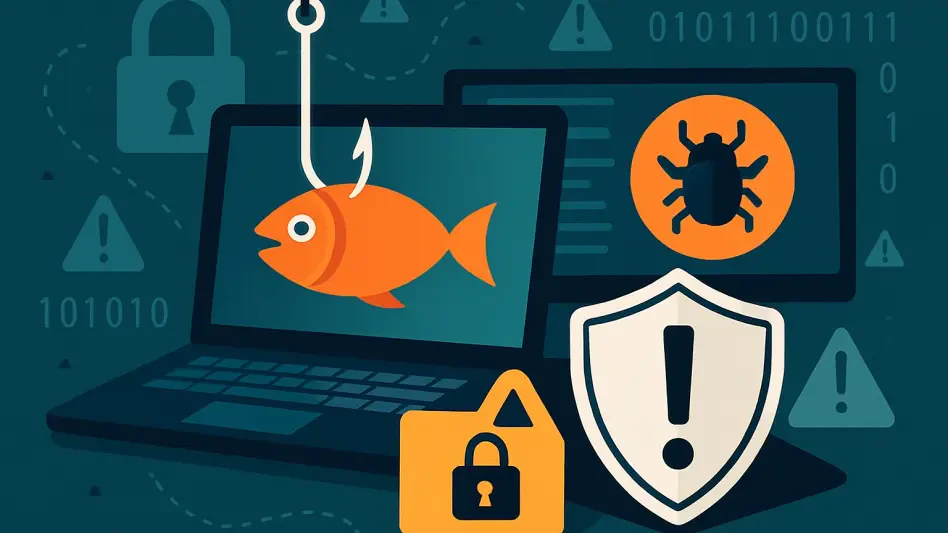The pressing issue of rapidly escalating cybercrime, especially the rise in ransomware attacks, necessitates a new approach to combating digital threats. For too long, victims have been blamed for cyber breaches, overshadowing the fact that cybercrime is inherently criminal behavior, akin to theft or vandalism in the physical world. Focusing solely on victim responsibility undermines the urgent requirement to address cyber threats through a systematic approach. This narrative needs to shift, moving away from victim-blaming towards a collaborative effort acknowledging the multifaceted nature of these technological crimes. A thorough exploration of cybercrime dynamics demonstrates the necessity for a comprehensive strategy that includes cooperation between the private sector and government, improved regulation compliance, and impactful law enforcement measures.
Understanding the Evolution of Cybercrime
The Increasing Prevalence of Ransomware
Ransomware has emerged as a prominent form of cybercrime, altering the threat landscape significantly over recent years. Unlike earlier cyber threats primarily focused on financial information theft, ransomware involves encrypting a victim’s data and demanding a ransom for its release. The allure of ransomware for criminals lies in its efficiency and profitability, as it enables lucrative extortion without needing technical expertise. Additionally, the anonymity afforded by cryptocurrencies has revolutionized the profitability equation involved in cyber extortion. Through anonymous transactions, perpetrators of ransomware attacks can extort large sums without disclosing their identities, thereby minimizing the risk of capture. The rise in ransomware incidents illustrates a dangerous trend where the evolution of cyber threats outpaces traditional preventive measures, necessitating an adaptable and robust response framework.
Cryptocurrencies and the Shift in Cybercrime Dynamics
The advent of cryptocurrencies has notably shifted the dynamics of cybercrime, particularly in how payments are conducted within ransomware schemes. Cryptocurrencies allow transactions to be conducted without revealing the identities of parties involved, thus facilitating untraceable extortion payments and complicating law enforcement efforts. This ability to convert digital assets into real-world currency while maintaining anonymity has significantly altered the risk-reward calculation for cybercriminals, making participation increasingly attractive. Unlike traditional currency systems where transactions could be traced, cryptocurrencies have allowed cybercriminals to amass substantial profits while remaining elusive. This development has necessitated a reevaluation of how cybercrime is approached, with greater emphasis on understanding and regulating these anonymous payment systems to curtail the growing trend of cryptocurrency-backed cyber extortion.
The Complexities of Combatting Cybercrime
Jurisdictional Challenges and Global Cooperation
Cybercrime is uniquely challenging to combat due to its cross-border nature, presenting significant jurisdictional challenges. Criminals often operate from countries that have passive tolerance or lack extradition agreements with affected nations, allowing them to evade prosecution. This creates ‘safe havens’ where cybercriminals operate with impunity, exploiting the limitations of national law enforcement agencies. Consequently, effective combat against cybercrime necessitates international cooperation and agreements that transcend national jurisdictions. Countries must work collaboratively to mitigate the safe havens created by international borders and establish frameworks for pursuit and prosecution that accommodate the global scope of the digital world. However, achieving such cooperation can be complex, as differing priorities and legal systems complicate the creation of a unified front against cybercriminals.
The Limitations of Current Regulatory Frameworks
Existing regulatory structures such as GDPR and HIPAA aim to protect data privacy and secure user information but have been insufficient in curbing the rise of cybercrime. While these regulations impose compliance obligations on organizations to ensure robust data protection measures, they fall short of addressing the core issue of cybercriminal behavior. Compliance with these regulations often results in administrative oversight, but the effectiveness in reducing crime rates remains questionable, evidenced by the continued growth of cybercrime. Regulations need to be complemented by comprehensive enforcement strategies, capable investigative methods, and deterrent measures to address the thriving cybercriminal ecosystems that exploit regulatory gaps and operate across international boundaries with relative freedom from consequence.
Strategies for a Comprehensive Cybersecurity Approach
Shifting the Focus from Victim Blaming
Changing societal and governmental perspectives to recognize cyber-attacks as criminal acts rather than the result of victim negligence is imperative in the fight against cybercrime. This shift necessitates acknowledging that, while businesses must maintain certain cybersecurity measures, the problem itself lies with the perpetrators. By ceasing to blame victims, resources can be redirected towards identifying, apprehending, and punishing criminals. Despite some countries increasing their cybersecurity policing efforts, they remain underfunded considering the magnitude of the threat. Moving the discourse away from victim responsibility allows for a collaborative, rather than adversarial, relationship between companies and regulatory bodies, fostering an environment conducive to shared solutions and best practices in cyber defense.
Tracing Anonymous Payments as a Deterrent
Regulating and tracing the conversion of cryptocurrencies into traditional currency stands out as a critical step in mitigating cybercrime. Ensuring traceability in financial activities associated with ransomware and other cybercrimes could significantly hamper criminal operations, providing a deterrent against such activities. Creating policies that require verified identification for cryptocurrency transactions can introduce accountability and transparency within the system. Governments must develop robust mechanisms to balance taxation interests and financial privacy while effectively tracking cryptocurrency to mitigate its use in criminal endeavors. By implementing stringent regulations over digital currencies, authorities can disrupt the financial incentives driving cybercrime, compelling the digital underworld to reconsider engagement in illegal activities.
Strengthening Legal Consequences for Cybercriminals
To deter cybercriminals effectively, substantial penalties and relentless pursuit should form a core part of cybersecurity strategy. Historically, the probability of getting caught and facing consequences has deterred many from engaging in crimes. However, the internet diminishes this deterrent by enabling anonymous operations from jurisdictions that do not prosecute cyber offenses. Strengthening legal frameworks to ensure extradition agreements for cybercrimes and exerting political pressure on nations harboring criminals can be effective measures. Implementing punitive actions such as connectivity restrictions for countries that fail to cooperate can incentivize those governments to reconsider their positions. Through decisive international policy and reinforced legal mechanisms, the risks associated with cybercrime can be elevated to levels that dissuade criminal participation.
Looking Towards Sustainable Cybercrime Solutions
The Role of Public-Private Partnerships
Effective responses to cybercrime lie in fostering collaborative public-private partnerships that pool resources, knowledge, and expertise to address complex challenges. By leveraging each sector’s strengths, such partnerships facilitate the development of comprehensive cybersecurity protocols, enabling more effective threat detection and response. Governments, industry innovators, and individual organizations must collectively assess risks, share intelligence, and identify vulnerabilities to preempt cyber threats. These partnerships also provide a platform for establishing standardized practices and advancing common policy goals. In mobilizing multi-sector cooperation, cybersecurity initiatives gain access to diverse perspectives and capabilities vital for confronting and neutralizing the varying forms of cybercrime that continue to evolve on a global scale.
Developing Future-Oriented Cybersecurity Measures
As digital landscapes continue to evolve, forward-thinking strategies and proactive approaches are paramount for sustainable cybersecurity solutions. Investing in cutting-edge technologies such as artificial intelligence and machine learning enhances threat prediction and response capabilities, providing a dynamic edge in detecting unauthorized activities before they escalate into full-scale attacks. Innovation in security technology combined with ongoing education efforts ensures that personnel remain adept at navigating the shifting cyber terrain. Moreover, creating adaptive policy frameworks that evolve with technological advancements enables regulatory bodies to anticipate and counter emerging cyber threats effectively. A commitment to future-oriented perspectives ensures robust cyber defenses that are enduring, versatile, and equipped to handle the complex and fast-changing nature of modern cybercrime.
Transformative Change upon the Cybercrime Landscape
In conclusion, confronting cybercrime requires reevaluating existing perceptions and policies to achieve meaningful change. The cybersecurity landscape demands comprehensive approaches that go beyond blaming victims, incorporating collaborative solutions, legal reforms, and advanced technological measures. Addressing the root causes of cyber threats through international cooperation and innovative regulation can reduce their frequency and impact. Efforts to mitigate cybercrime must reflect an understanding of its complexity while pursuing collaborative efforts across sectors, underscoring the importance of vigilant, coordinated strategies that anticipate and counter threats. By focusing on systemic change, stakeholders can effectively shoulder the collective responsibility of securing the digital realm, ultimately mitigating the global economic and societal risks associated with relentless cyber threats.








